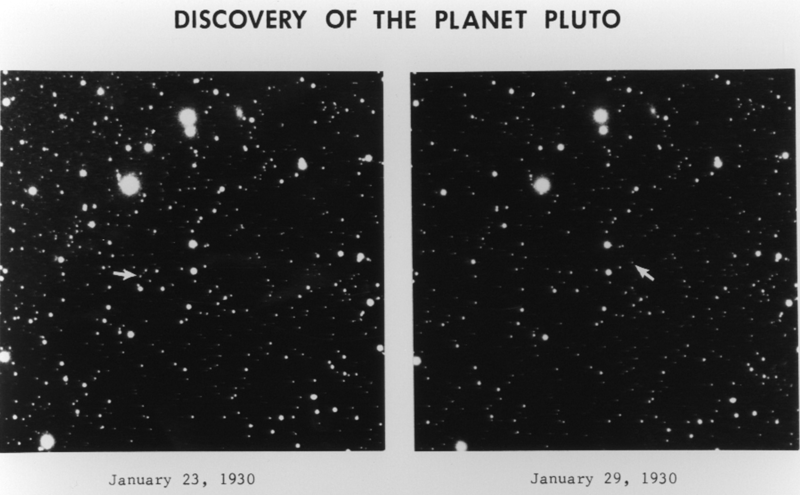In the beginning of the 20th century, astronomers studied the orbit of Neptune and calculated that there must be another planet in the outer reaches of the Solar System that was pulling at the planet with its gravity. Percival Lowell, who was made famous by his “discovery” of canals on Mars, coined the term for this theoretical object: Planet X.
Lowell performed two searches for Planet X, but failed to turn up the object. He revised his predictions for the location of Planet X twice, and failed to find it. Ironically, two faint images had been recorded on photograph plates at the Lowell observatory, but Lowell didn’t recognize them.
Lowell’s observatory continued to search for Planet X up until his death in 1916. So the task fell to Clyde Tombaugh. Tombaugh’s job was to systematically observe pairs of photographs taken of the night sky. He used a machine called a blink comparator, which flashed two images of the same region of the sky. Any moving objects, like asteroids or undiscovered planets, would appear to change in position from one image to the next.
On February 18, 1930, Tombaugh finally turned up the object he was looking for, and announced that he had discovered Planet X, later renamed to Pluto.
Astronomers have been searching for additional planets beyond Pluto ever since, hoping to find the elusive Planet X. Japanese astronomers have predicted that an object between the size of Mars and Earth could be out at the end of the Kuiper Belt – a region known as the Kuiper Cliff, at 55 astronomical units from the Sun.

